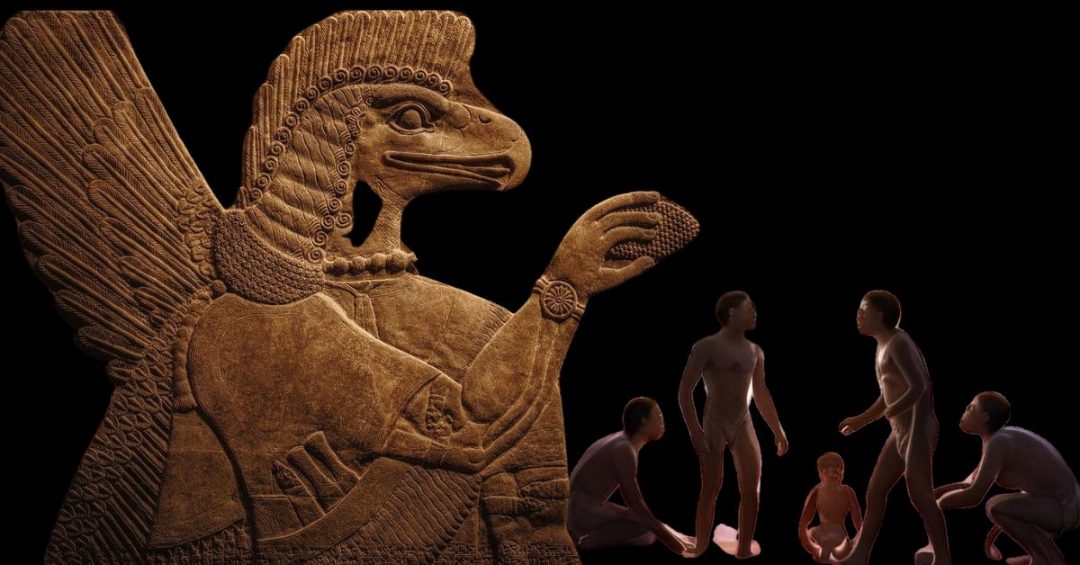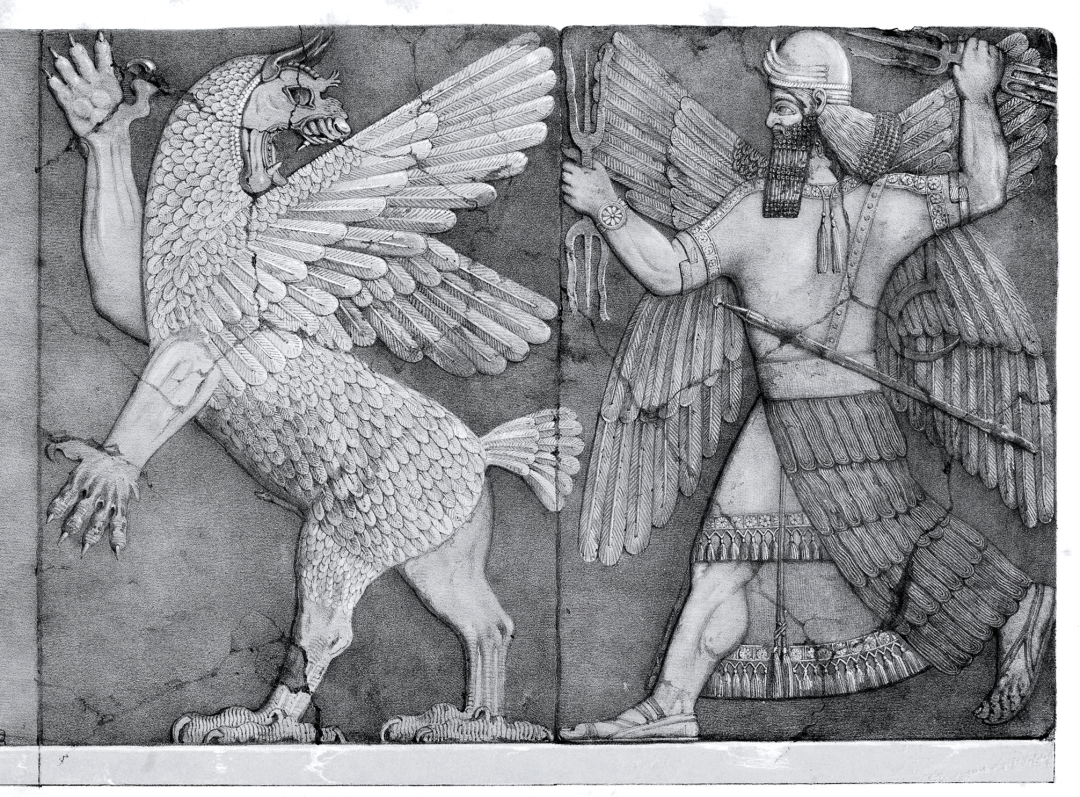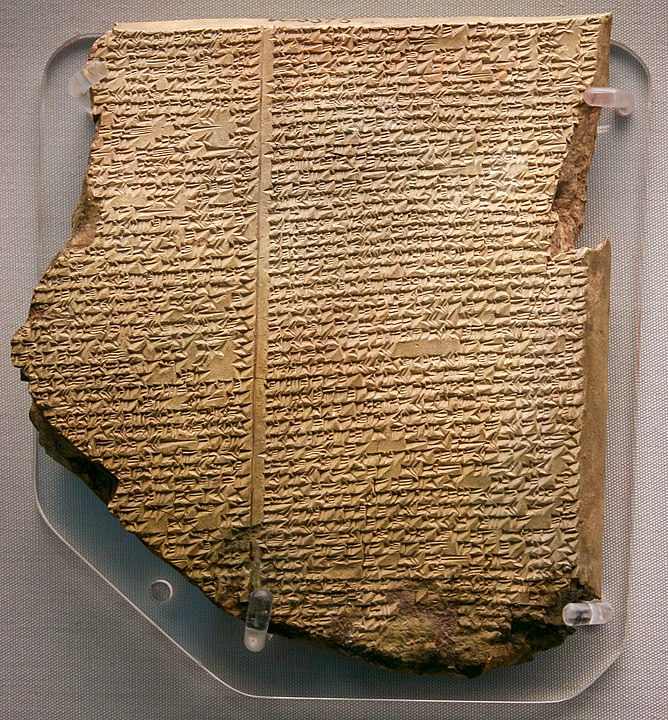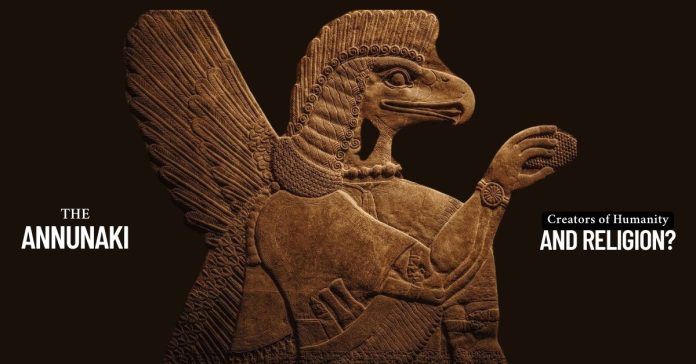
The question of whether humanity was designed by divine beings from the skies has long captivated the human imagination. Rooted in ancient astronaut theory and the rich mythology of Mesopotamia. The narrative of the Anunnaki offers a profound exploration of civilization’s origins and humanity’s relationship with the divine. From Zecharia Sitchin‘s controversial theories. To the cryptic symbols inscribed on ancient Sumerian tablets. The Anunnaki mythos continues to challenge long-held beliefs about human history, religion, and existence.
This analysis examines the historical, mythological, and speculative dimensions of the Anunnaki narrative. Tracing its origins through ancient Mesopotamian literature. Along with its evolution into modern theories that seek to bridge mythology and cosmic origins.
Who Are the Anunnaki?
The Anunnaki are a pantheon of deities originating in ancient Mesopotamian cultures, notably among the Sumerians, Akkadians, Assyrians, and Babylonians. The term “Anunnaki” derives from the Sumerian words An (heaven) and Ki (earth). Translating to “offspring of An” or “princely offspring.” This nomenclature reflects their mythological role as the progeny of An, the sky god, and Ki, the earth goddess.
In Sumerian mythology, the Anunnaki held supreme authority, often depicted as divine arbiters who determined human destiny. Enlil, the god of air, is frequently portrayed as their chief. Their primary function involved convening in assembly to render judgments over gods and humanity alike.

The Babylonian creation epic, Enūma Eliš, underscores the Anunnaki’s cosmological importance. In this narrative, following the defeat of the primordial goddess Tiamat, the god Marduk assigns domains to the Anunnaki. Then honors them by commissioning the construction of Babylon and the Esagila temple. Similarly, the Epic of Gilgamesh portrays the Anunnaki as judges of the underworld. Capable of wrathful destruction, as illustrated in the narrative of the Great Flood.
Throughout Mesopotamian literature, the Anunnaki are characterized by immense power coupled with human-like emotions, engaging in conflict and moral judgment. This complex portrayal reflects ancient Mesopotamian views of the divine as deeply intertwined with human existence.
Zecharia Sitchin and The 12th Planet
Zecharia Sitchin (1920–2010), a scholar of ancient Near Eastern languages and civilizations, authored The 12th Planet in 1976. The foundational text of his Earth Chronicles series. The book synthesizes Sitchin’s interpretations of Sumerian cuneiform tablets and other ancient Mesopotamian texts. Proposing a radical reimagining of human origins. Central to his thesis is the existence of Nibiru, a hypothetical twelfth planet in our solar system. Posited as the home of an advanced extraterrestrial civilization known as the Anunnaki.
Sitchin argued that the Anunnaki genetically engineered Homo sapiens as a labor force to mine Earth’s resources. Framing this narrative as a reinterpretation of Sumerian creation myths. Such as the Enuma Elish , and biblical accounts like the Genesis story of Adam and Eve 89. He further suggested that Nibiru follows a long elliptical orbit, periodically returning to the inner solar system. An event he linked to cataclysmic episodes in human history.
The book’s claims, including the assertion of “indisputable documentary evidence” for Nibiru and the Anunnaki’s role in human development. Have gained significant attention in alternative history and ancient astronaut theory circles. Sitchin’s work is often cited by proponents of extraterrestrial intervention hypotheses. Who integrate his theories into broader discussions about humanity’s connections to advanced civilizations.
Sitchin’s interpretations remain controversial. But his ability to weave complex narratives from ancient texts has sparked enduring public interest. Resulting in revisiting antiquity through interdisciplinary lenses. His legacy reflects a cultural fascination with unanswered questions about cosmic origins and humanity’s place in the universe
Ancient Astronaut Theory and Eric Von Daniken
The modern intrigue surrounding the Anunnaki and their potential extraterrestrial connections also gained significant traction with the publication of Erich von Däniken’s 1968 book, Chariots of the Gods?. In this seminal work, von Däniken proposes that ancient civilizations were visited by advanced alien beings. Who imparted knowledge and technological prowess to early humans, thereby catalyzing significant cultural and technological advancements. He suggests that these extraterrestrial visitors were revered as deities, a concept that aligns with interpretations of various mythologies, including those involving the Anunnaki.
Von Däniken points to several ancient structures and artifacts as evidence supporting his Ancient Astronaut Theory. Among these, he highlights the Egyptian pyramids, the Moai statues of Easter Island, and the Nazca Lines of Peru. He argues that the construction of these monumental works required a level of technological sophistication ostensibly beyond the capabilities of the societies that built them. Implying that extraterrestrial guidance or assistance was involved.
The Nazca Lines, in particular, are a series of large geoglyphs etched into the Peruvian desert. Depicting various shapes, animals, and humanoid figures. Von Däniken suggests that these expansive designs. Visible primarily from the air, may have served as landing strips or signals for ancient alien spacecraft. Recent advancements in technology have led to the discovery of additional geoglyphs in the Nazca region. Researchers utilizing artificial intelligence and drone technology have identified hundreds of new figures. Including humanoid shapes and animals, dating back over 2,000 years. These findings contribute to the ongoing exploration and understanding of the Nazca Lines’ origins and purposes.
Däniken’s Cultural Impact
Von Däniken’s theories have captivated the imagination of many and sparked widespread interest in the possibility of ancient extraterrestrial contact. But they have also faced substantial criticism from the scientific and archaeological communities. Critics argue that his interpretations often misrepresent data and overlook the demonstrated capabilities of ancient cultures to create such structures independently. For instance, the construction techniques of the Egyptian pyramids have been extensively studied. Revealing that the ancient Egyptians possessed the necessary knowledge and resources to build these monumental structures without alien intervention.
Despite the controversies, von Däniken’s work has undeniably influenced popular culture and inspired further exploration into humanity’s past. His ideas have led to numerous discussions, documentaries, and debates about the potential role of extraterrestrial beings in shaping human history. This enduring fascination underscores a collective curiosity about our origins. And the possibility that we may not be alone in the universe.
Anunnaki Origins in Sumerian Civilization
The Sumerians, who flourished around 4500 BCE in Mesopotamia, are credited with establishing one of humanity’s earliest known civilizations. They introduced significant innovations, including the development of cuneiform script. One of the earliest writing systems, and advancements in mathematics and law. Their mathematical system, developed prior to their writing, was integral to various aspects of their society. Including land measurement and the creation of irrigation systems.
The sudden emergence of such complex cultural and technological advancements has led historians to explore the origins of Sumerian knowledge. Some scholars propose that the Sumerians may have inherited knowledge from earlier, advanced societies, while others speculate about external influences. In Sumerian mythology, the Anunnaki are depicted as a group of deities who played a role in decreeing the fates of humanity. The myth “Enki and the World Order” suggests that one of their main functions was to decide human destinies. This has led to interpretations that the Anunnaki were influential in guiding the development of human civilization, including that of the Sumerians.
While mainstream scholarship attributes Sumerian advancements to human ingenuity and societal evolution, these alternative perspectives continue to intrigue those fascinated by the potential intersections of mythology and the development of early human civilizations.
The Creation of Humanity: The Epic of Atraḥasis
The Anunnaki, central figures in Mesopotamian mythology, are often depicted as playing a pivotal role in the creation of humanity. The Epic of Atraḥasis, a Babylonian narrative from the 17th century BCE, provides a detailed account of this creation myth. According to the epic, the lesser gods, known as the Igigi, were burdened with laborious tasks such as digging irrigation canals to sustain the land. After enduring this toil for an extended period, the Igigi rebelled against their overseer, Enlil, the chief deity.
To address this uprising and alleviate the gods’ workload, Enki, the god of wisdom and freshwater, proposed the creation of humans to assume these labors. Collaborating with the mother goddess Mami (also known as Ninhursag), Enki fashioned the first humans from a mixture of clay and the blood of a slain god, imparting them with both the strength to perform arduous tasks and a portion of divine essence. This act established a dual relationship between the gods and humans, wherein humans served the deities through their labor and, in return, received guidance and protection.
The Flood Myth and Its Perpetuation
The narrative of the great flood, strikingly similar across cultures, reflects themes of divine retribution and humanity’s moral failings. Many traditions depict floods as a response to human disobedience or corruption, often framed as a divine reset. For instance, Sumerian texts describe the Anunnaki gods deciding to unleash a flood to address humanity’s growing dissent, a motif echoed in later Babylonian accounts. This aligns with the Epic of Gilgamesh , where the god Enlil orchestrates a flood to punish humanity, sparing only Utnapishtim and his ark .

Parallel stories appear in the Judeo-Christian Bible and Islamic Quran, where Noah (or Nuh) is instructed to build an ark to survive the deluge, saving his family and animal species 8. Similarly, the ancient Mesopotamian figure Ziusudra plays a comparable role in Sumerian lore. These shared elements—divine anger, a chosen survivor, and an ark—suggest a common cultural or historical foundation.
Flood Myth Pushback
Scholars propose that flood myths may originate from collective human experiences of catastrophic flooding, such as those in the Fertile Crescent, where rising waters could have inspired localized legends. Over time, these stories evolved into moral allegories, symbolizing purification, renewal, or warnings against hubris. The Babylonian version, among the oldest recorded, influenced later Abrahamic traditions, illustrating how myths adapt across civilizations. Thus, the flood myth’s endurance underscores its role as both a historical allegory and a universal metaphor for human vulnerability.
Anunnaki Influence on Modern Religions
The Anunnaki’s legacy transcends ancient Sumer, shaping core tenets of modern religious thought. Central to this influence is the concept of divine hierarchy and creation narratives. For instance, the Abrahamic faiths’ depiction of humanity being formed from clay or dust, animated by a divine breath, mirrors Sumerian accounts of the Anunnaki crafting humans as laborers. The Quran (23:12–14) and Genesis (2:7) both reflect this motif, suggesting a shared mythological root.
Polytheistic traditions, such as the Egyptian, Greek, and Hindu pantheons, also exhibit structural parallels to Anunnaki lore. The recurring theme of a divine trinity—seen in Enlil, Anu, and Enki (Anunnaki leaders)—resonates in later triadic frameworks like Brahma-Vishnu-Shiva or the Christian Trinity. Scholars argue that these patterns stem from early Mesopotamian cosmology, which framed gods as architects of order and morality.
Even monotheistic frameworks may trace their origins to Anunnaki-inspired polytheism. The evolution from a council of gods (as in Sumerian texts) to a singular, omnipotent deity (Yahweh in Judaism or Allah in Islam) reflects humanity’s attempt to reconcile divine sovereignty with evolving theological needs. This synthesis underscores how ancient narratives continue to permeate modern spirituality, whether through direct scriptural parallels or subconscious cultural inheritance.
Conclusion
The enduring intrigue surrounding the Anunnaki mythology continues to provoke questions about humanity’s origins and its relationship with the divine. Central to this discourse is the notion that the Anunnaki were not mere mythological deities but potentially advanced beings who played a pivotal role in the creation of humanity. According to interpretations inspired by ancient Sumerian texts and popularized by alternative theorists like Zecharia Sitchin, the Anunnaki engineered Homo sapiens by combining their own genetic material with that of early hominids. This narrative proposes that humans were created not through natural evolution alone but through deliberate genetic manipulation to serve as a labor force for these celestial beings.
Supporters of this theory point to parallels between Mesopotamian myths and other ancient religious traditions, particularly the motif of humanity being formed from clay or dust infused with divine essence. Similar accounts appear in the Bible’s Book of Genesis and the Quran, suggesting a potential common origin or shared cultural memory. Proponents argue that the consistency of these myths across civilizations indicates a profound historical event—one that may hint at extraterrestrial intervention.
Moreover, the Anunnaki’s depiction as powerful, anthropomorphic beings with advanced knowledge raises questions about the sudden emergence of civilization in Sumer. The rapid development of writing, mathematics, law, and agriculture could be interpreted as evidence of external guidance. Alternative historians suggest that such advancements are unlikely to have arisen spontaneously and may reflect inherited knowledge from an advanced civilization—possibly the Anunnaki.
While mainstream scholars attribute these cultural milestones to human ingenuity and societal evolution, the alternative perspective of extraterrestrial involvement continues to captivate the imagination. Whether the Anunnaki were literal beings from another world or symbolic representations of natural forces and human aspirations, their legacy endures as a powerful narrative of creation, struggle, and divine influence. The question of whether humanity was designed by celestial beings or evolved naturally remains a profound and enduring mystery, reflecting humanity’s timeless quest to understand its place in the cosmos.

